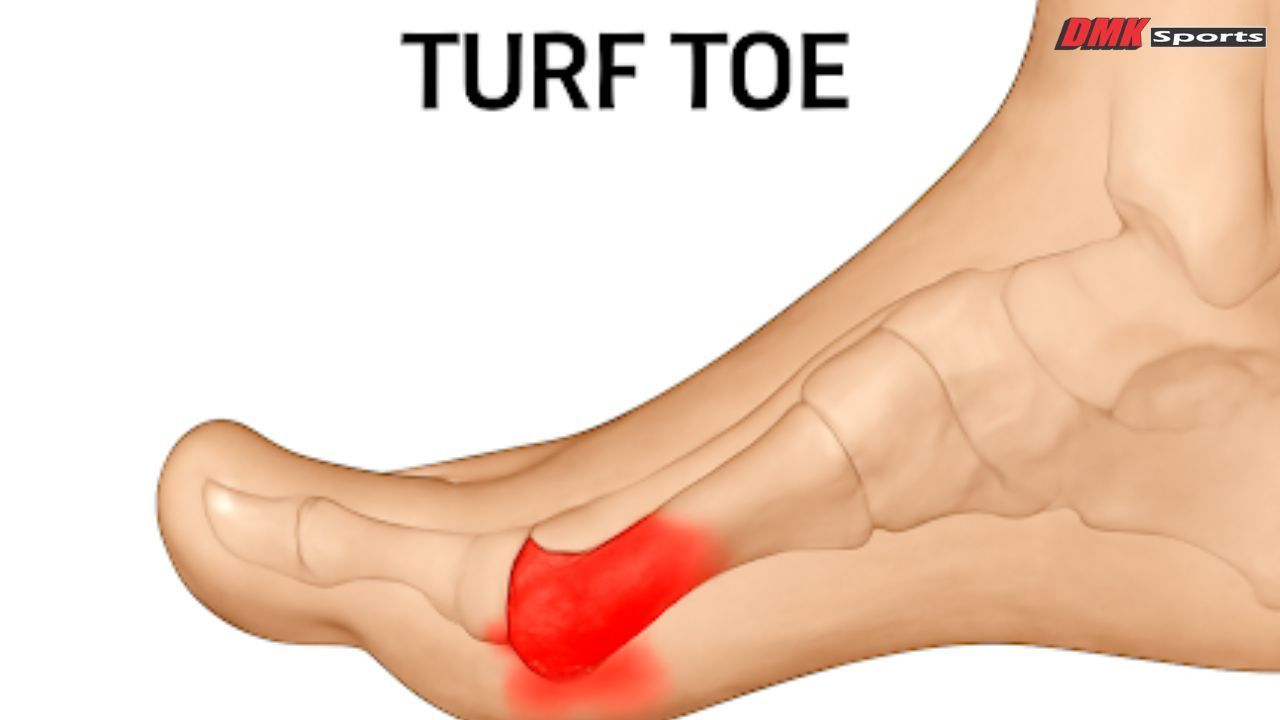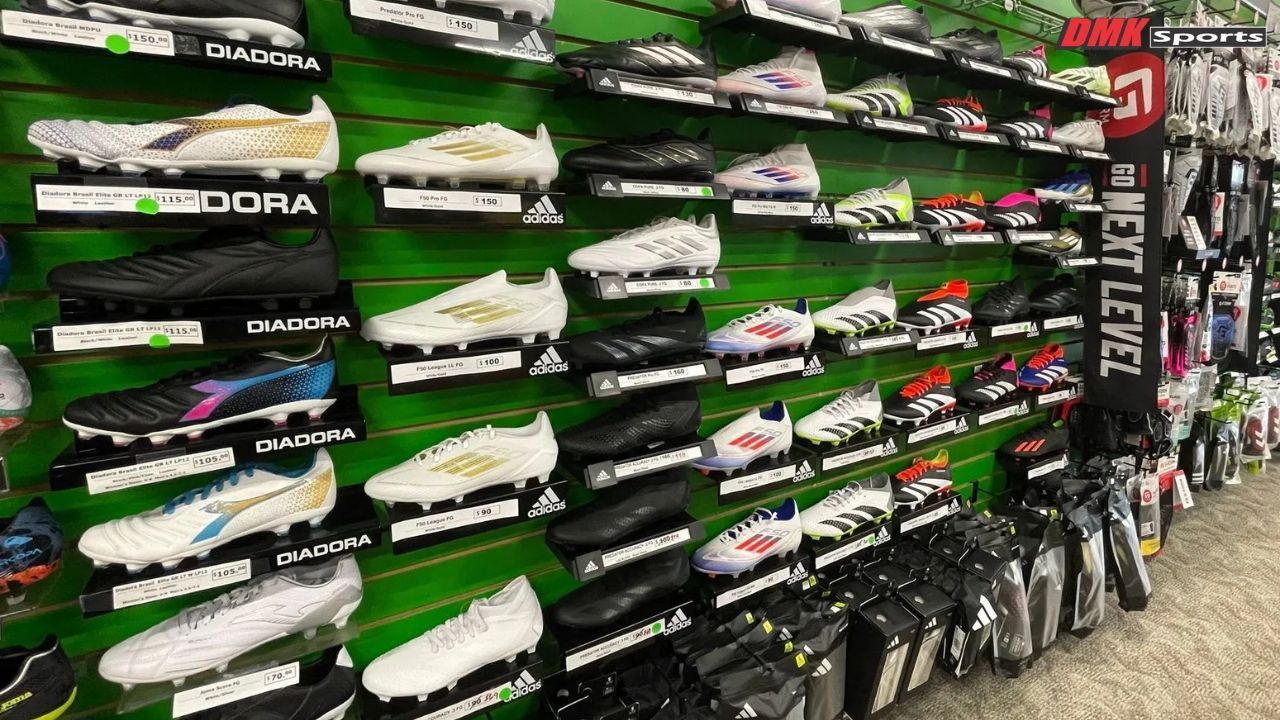Can I Still Play Soccer with Turf Toes?

As an athlete it is important to stay cautious on the field, your sudden swift plays, sharp pivots, and can turn any of your routine games into a turf toe nightmare.
Turf toe is way more common than you think, most of the time this injury among soccer players involves pain, swelling, and limited mobility in the big toe joint from hyperextension of the toe, often during sudden sprints, pivots, etc.
Whether one can continue playing depends on injury severity, recovery methods, and performance considerations, one factor which is also considered is the turf shoes in soccer fields. The article below is going to help you understand Turf Toe and some fixes to keep yourself safe.
Understanding Turf Toe and Its Impact
In medical terms the injury affects the metatarsophalangeal joint, which is extremely crucial for running, kicking, and it is the reason why you maintain balance.
So, even with a minor turf toe injury can lead to reduced agility, acceleration, and ball control, while playing through it may cause joint instability, ligament damage, and chronic pain.
Symptoms That Affect Play
Here are some of the symptoms that you need to be aware of:
- Swelling and bruising around the big toe
- Tenderness during push-off or sprinting
- Stiffness limiting toe extension
- Pain when kicking or changing direction
These symptoms directly impact soccer-specific movements such as dribbling, shooting, and rapid pivots.
Levels of Severity and Playing Considerations
Turf toe injuries are classified into three grades:
- Grade 1 (Mild): Minor sprain; players may continue with taping or supportive cleats.
- Grade 2 (Moderate): Partial tear with moderate swelling; play should be limited and monitored.
- Grade 3 (Severe): Complete tear; playing is strongly discouraged due to risk of permanent damage.
Protective Measures for Playing
Here are some of the protective measures that you need to know for mild to moderate turf toe, interventions include:
- Toe Taping: which is commonly done to reduce hyperextension and allow stability to your joint.
- Custom Insoles or Orthotics: Redistribute pressure and relieve strain.
- Stiff-Soled or Turf-Specific Cleats: Limit toe flexion while maintaining traction.
- Pain Management: Some of the common prevention methods are topical anti-inflammatory gels, pain meds as advised by the doctor..
You can also head to DMK Sports Young & Adult Turf shoe options to learn more about the Turf shoes usage in soccer along with various footwear, including adult and youth cleats, indoor shoes, and turf-specific options.
Training Modifications
Adjusting training can prevent aggravation:
- Reduce sprinting and cutting drills
- Focus on passing and positional play
- Incorporate low-impact conditioning like cycling or swimming
- Schedule ice therapy and elevation after sessions
Medical Evaluation and Rehabilitation
Professional assessment ensures proper joint stability and ligament integrity:
- Physical examination for range of motion and pain
- X-rays or MRI to rule out fractures or severe tears
- Strength and mobility tests to identify compensatory movements
Rehabilitation involves rest, strengthening exercises, and progressive weight-bearing drills to restore full motion and prevent chronic instability.
Strengthening Exercises
Effective exercises include:
- Toe curls and towel scrunches for intrinsic foot muscles
- Marble pickups and resistance band stretches for controlled motion
- Calf raises and balance drills for foot stability
When to Avoid Playing
Soccer should be avoided if:
- Pain persists during push-off or kicking
- Swelling or bruising limits movement
- Injury is Grade 3 or structural damage confirmed
- Joint has not regained strength and stability
Ignoring these signs can lead to chronic pain, reduced performance, and joint degeneration.
Long-Term Implications
Repeated play on an injured toe can cause:
- Chronic stiffness and limited extension
- Degenerative arthritis
- Altered gait mechanics, affecting knees and hips
- Higher risk of additional injuries
You need to have a structured program as you go through rehabilitation and adhere to the prevention programs that are essential for longevity and peak performance as an athlete.
Preventive Strategies
To reduce turf toe recurrence:
- Wear turf-appropriate cleats with stiff soles and cushioning
- Gradually increase intensity after injury
- Perform regular foot and ankle strengthening
- Avoid excessive hyperextension movements
- Use supportive taping or orthotics during intense play
DMK Sports provides expert guidance on selecting the best soccer cleats tailored to your playing style and position.
Recommended Reads
- Best Futsal Shoes for Grip, Control & Speed in 2025
- The Difference Between Indoor Soccer Shoes and Turf Shoes
- How to Choose the Most Comfortable Futsal Shoes
Conclusion
If you are a person who plays sports frequently then you need to be aware of the injuries and preventive measures that you can take while playing soccer with turf toes depending on injury severity and protective measures.
In case of mild injuries you may allow limited participation with taping, specialized cleats, and modified drills. Whereas in cases when you have had moderate to severe cases a thorough rest, rehabilitation, and medical supervision is required.
In order to return to the field safely, players need to prioritize their health, and pain management is crucial to ensuring they don't risk chronic complications and players should also keep turf shoes usage in soccer in mind.
Proper understanding of turf toe severity, rehabilitation, and prevention along with gears is essential for any player aiming to maintain performance and avoid long-term damage.










